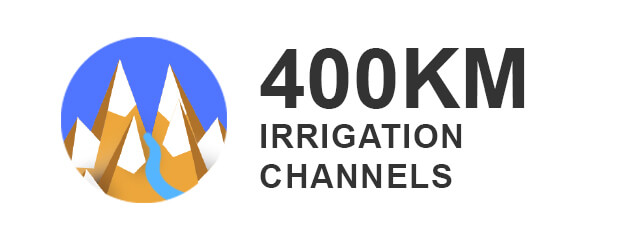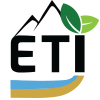Hydro technology for irrigation remained an integral part of indigenous skill, which helped in changing vertical desert of Hindu Kush, Karakuram and Himalayas into green oasis of agriculture. The old irrigation channels were done under the collective ethos called hila shiri under the supervision of the king of a principality. The traditional mode of governance, social structure and implementation of collective initiative proved conducive in irrigtion of new land through water channels. With modernity and modernization in Gilgit-Baltistan the traditional collective ethos withered away and leaving people with no alternatives. As a result, the region witnessed increased in population on same size of agriculture land. Though 2% of land in Gilgit-Baltistan is arable, only 1% is in use, and rest is unused. Thousands of acres of arable land available but lying barren due to lack of resources for new irrigation channels and expansion of existing channels. Because of dwindling of agriculture land, some section of society are trapped in perpetual poverty. Irrigation of new agriculture land can bring unused land into agricultural use, which in its turn enable local communities to address issues of food insecurity and poverty.

It is by taking cognizance of importance of agriculture land in the livelihood of people ETI has embarked upon an initiatiuve of irrigation channels. The sub-component of irrigatioin channel aims at developing 50,000 additional acres of irrigated and in the targeted 4 districts of GB region. Priority is given to irrigation facilities for bigger chunks of land, say around 250 to 1000 acres or more in the initial phase and then moving to smaller schemes on a sliding scale. In doing so, inter district balance and equity in terms of phasing was kept in view. Water Management Directorate (WMD), based on three different surveys, has already identified 43 water channels with a command area of 52,000 acres covering all 7 districts. The identification of channels is based on surveys conducted/facilitated by three different agencies in the past. The agencies include, JICA, MIES (the engineering wing of AKRSP) and WMD itself. Out of these around 23 schemes covering an area of 13,000 acres fall in four priority districts and will be the focus of programme during the initial period.
The programme follows a participatory approach to irrigation development, building on already tried and tested local models. SMP enacts a crucial role in this. However, unlike the prevailing practice in community executed schemes, where over 20% community contribution is expected, the schemes under ETI do not require any community contribution in the shape of labor or materials. ETI pays the full cost, as approved by PCU, for labor and materials but communities have to payback 50% cost of the scheme into a community based account for future investment on their own priority social and economic development priorities.
Appropriate safeguard features are built in the design and construction of the irrigation channels and roads along the slopes, including support structures like breast walls, retaining walls, use of HDP pipes in unstable zones, cross drainage etc. to reduce to minimum the possibilities of destabilizing the slopes and starting any slides. ETI engages independent consultants for irrigation and roads so that quality of designs and construction can be ensured. Irrigation off-take structures is designed to mitigate the effects of flash-floods and glacial movement. Where appropriate, flexible structures, instead of rigid structures, will be provided to enable the community to adjust them each watering season as per ground conditions.

